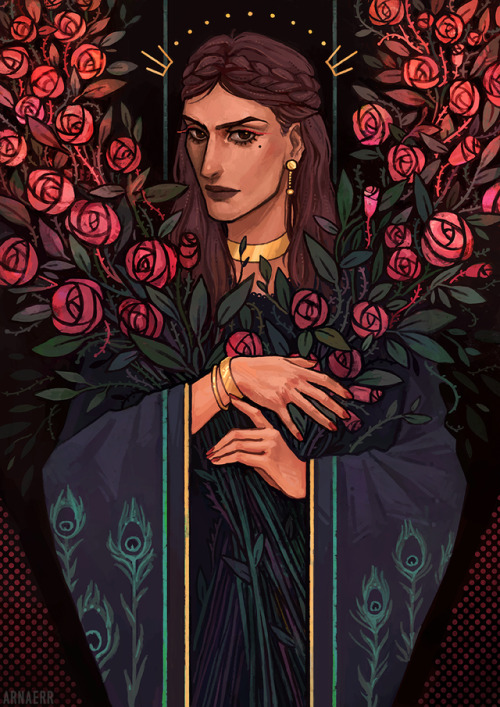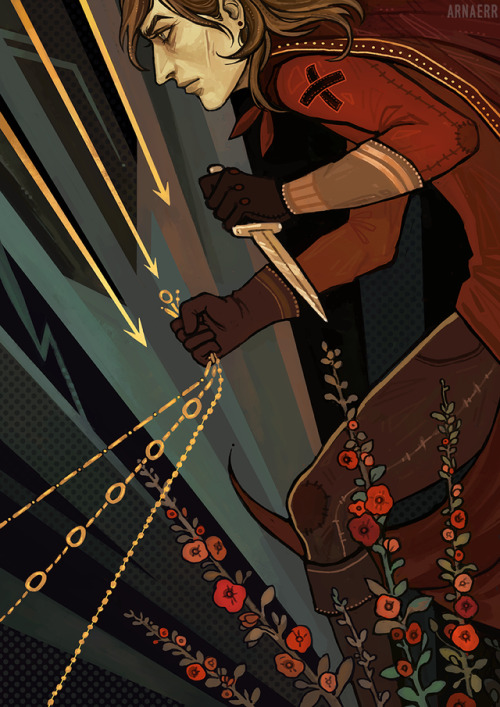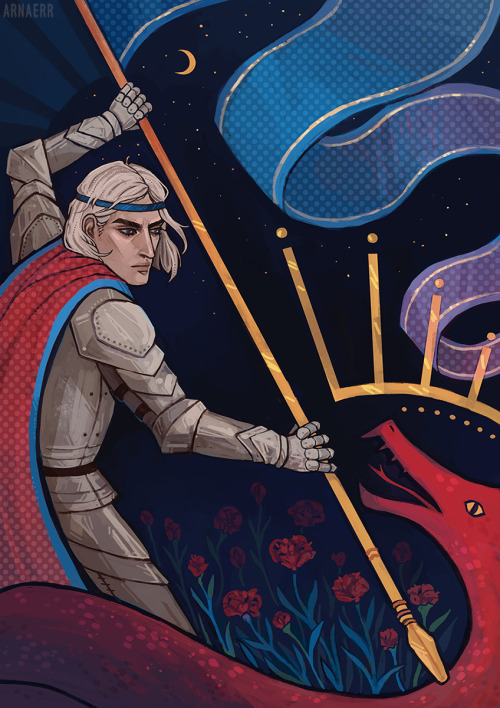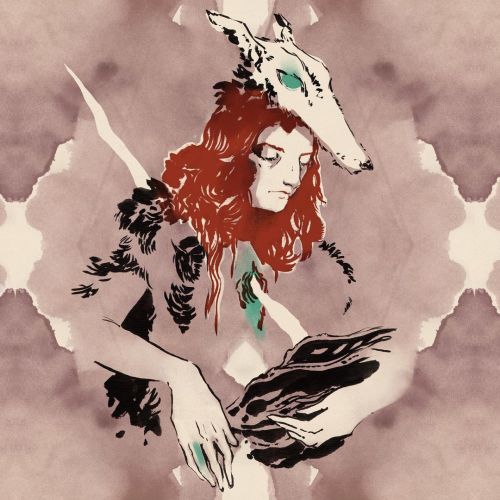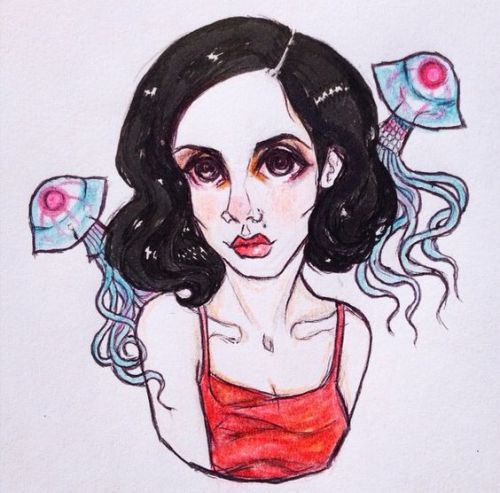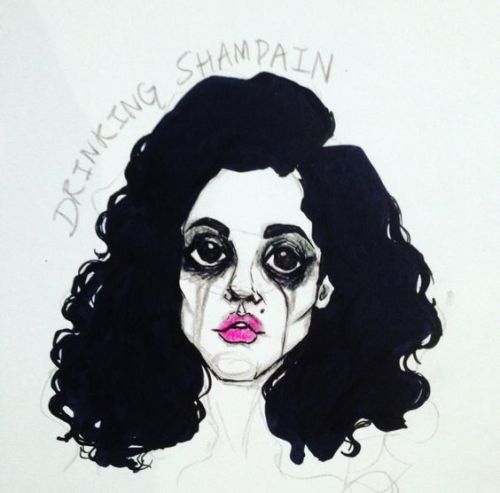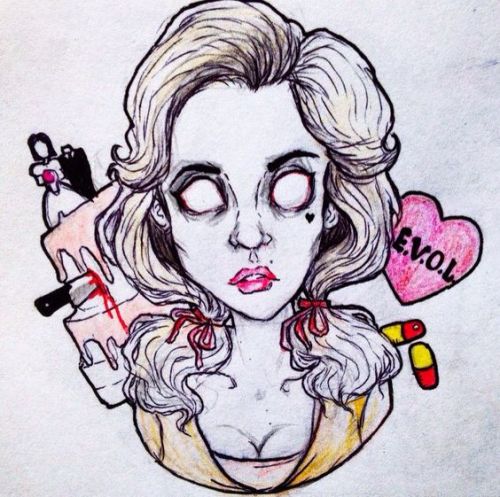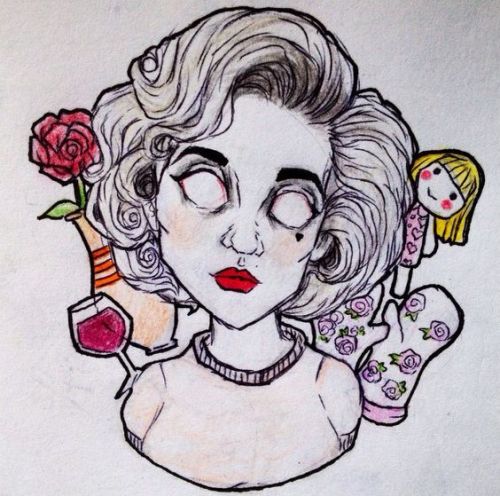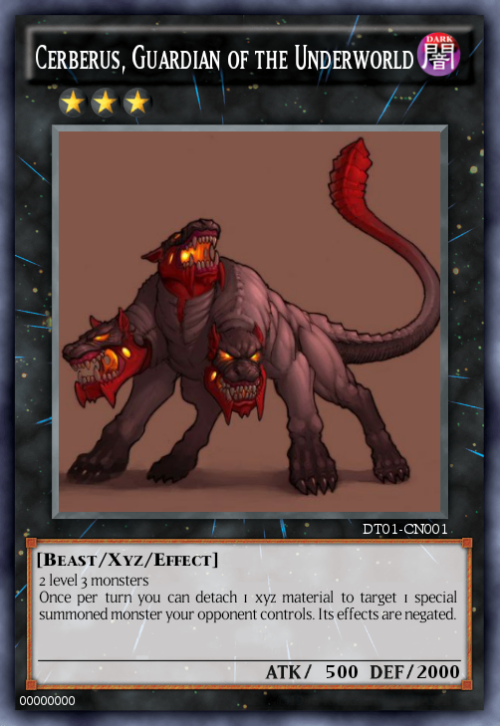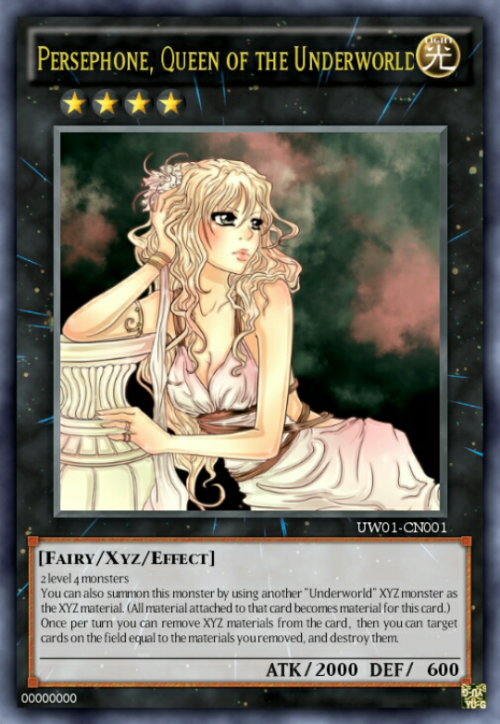#archetype

Ah, the Battleflowers of Ning, such grace, such elegance, such… lethality!
The concept of a “battle dancer” has been a thing for a long while, existing long before Pathfinder and Starfinder in RPGs and beyond. The idea of interpreting the “lethal dance” of melee combat literally to create beautiful, lethal styles is nothing new.
In the Pact Worlds setting of Starfinder, Battleflowers as a combat tradition have their origins on the somewhat isolated continent of Ning on Triaxus. Removed and independent from the ancient conflict between dragons and free ryphorians on the main continent, where in ancient times this elite warrior caste renounced all ties to their former lives, including their gender identity in order to focus on mastering their graceful style, some going on to master the style further, while others being encouraged to act as guardians to smaller settlements. Either way, the prestige and prowess of the battleflowers made them quite appealing to the nobility to take as consorts for the political prestige among any other reasons.
In the far future of Starfinder, the tradition is perhaps less politically-charged, but much the same as it was in those ancient days, producing an array of elite melee combatants that identify themselves as “they/them” or “it/its” and typically don’t talk about their pasts at all, living in the moment. Sure, the battle-ribbons have monofilament blades or plasma fields integrated into them now, but the celebrity status and lethal grace remains the same.
Traditionally, these warriors are rhyphorians or at least Triaxus-born, but the Immortal Suzerainity of Ning has always been an open and accepting place to those who come in peace, and the way of the battleflower can be quite appealing to many, especially those who already identify outside the gender binary and wish to leave their pasts behind. Naturally, this includes a lot of androids, but plenty of other races express interest in the profession as well.
By necessity, this archetype requires at least some training with dancing in order to properly blend it with actual combat. However, they also learn various martial techniques as part of their initial training, such as mastering advanced weapons, protecting others, using close combat to prevent other foes from interfering, improved combat maneuvers, moving at great speed, and even mastery rare exotic weaponry.
They say music and dance are the universal language, and these battleflowers can inspire awe in others regardless of language, either to merely improve their attitudes, or draw and hold their attention.
Though they are well-known for their use of weapons, these performers also know how to strike hard to debilitate foes in hand to hand combat, knocking foes off balance or knocking the wind out of them, even going for the sensory organs in more brutal displays.
Supremely balanced, they can use a bit of resolve to guarantee perfect balancing and leaping while still maintaining full speed.
The most skilled and powerful battleflowers are able to fully master the flow of battle, actively choosing when to act, moving swiftly, or letting others act first.
The battleflower archetype works best with mobile melee builds, naturally, but also has some social utility as well with their ability to alter attitudes with their physical prowess. There really isn’t a wrong class to use this archetype with. Certainly biohackers might get accused of doping in competitive circles, but their knowledge of their own bodies is second to none, not to mention the grace with which they can weaken foes with injections. Envoys and operatives often focus more on the technical aspects of the sport, the former on appealing to the crowd, and the latter on physical grace. Mechanics might fight alongside an equally agile drone, or enhance their abilities with an exocortex, or perhaps fight with a customized suit of armor or weapon. Magical classes like mystics, precogs, technomancers, and witchwarpers will likely blend melee and magic like the magi and warpriests of old in flashy combat styles. Meanwhile, martial classes like soldier, solarian, nanocyte, and vanguard will demonstrate pure combat skill with aplomb.
Battleflowers represent dedication to physical perfection in a way that mirrors and surpasses that of any other form of athleticism, and yet despite this, not even the most dedicated battleflower is truly removed from who they were before taking up the calling, and that history informs their behavior. Interestingly, while battleflowers show no outward expressions of gender does not mean they are all nonbinary, they merely cease to express that gender outwardly. These inner qualities are part of the discipline required to become a battleflower, and are a fascinating discovery for those they trust enough to open up to.
The plodding pace of the silicon-based urogs is hardly what most think of when imagining battleflowers, yet Geometry-Of-Dance has taken up the career path, eager to glean knowledge from the graceful motion of their fellow combatants. They even prove quite agile in their own right, spinning and rolling on the cushion of their electromagnetic propulsion.
A battleflower is murdered on stage during a performance by invisible assailants, with ordinary invisibility-negation doing nothing to discover the identity of the killers. In truth, a colony of lurkers-in-light, fey that are completely invisible in bright light, has infested the arena, led by an elder of their kind, a lightweaver. The mystery of discovering them, and why they murdered a performer, awaits the daring and the curious.
The battleflower known only as Lyrica comes to the party seeking aid, as an assassin from their previous life has finally caught up with them, eager to fulfill their long-standing contract for their head. For this reason, they wish to hire the party as bodyguards. To make matters more complicated, according to the law of their original homeworld, this contracted slaying is perfectly legal.

(Art by @AwkwardosThe3rd on Twitter)
Another construct-related archetype, but this one isn’t actually focused on the construct creature type at all, and isn’t even from Construct Handbook!
Indeed, this archetype takes the concepts of construct artifice in a different direction, focused on replacement and enhancement rather than creating a new being.
If you’re a fan of cybernetics, particularly of characters that have one or more super-strong artificial limbs that let them do amazing things, you’ll love this archetype, for these brawlers have at least one artificial limb that they have modified and iterated on to be a truly incredible feat of engineering and/or magical innovation, which they use in battle to devastating effect.
Such characters might have lost a limb due to violence, or they might have been born without a fully functioning limb, but they have learned to turn what would normally be an ability aid into a strength.
Of course, we can’t bring up disabilities like this without addressing the elephant in the room. Plenty of people with limb problems and other disabilities participate in these hobbies too, after all.
Even in a world of magic, disabilities are going to exist one way or another, especially since not everyone has access to or can afford permanent magical solutions to their disabilities. Magically or technologically-animated limbs are a classic trope, but while it is tempting to give these out as flavor and then act as though the character is not disabled at all, it is important to remember that even with the most advanced prosthesis today, there are still plenty of challenges for those with missing arms and legs, to say nothing of the problems of disabilities covered by this archetype. Using a prosthetic limb extensively can probably strain the connection point, causing bruising and the like, and the character probably doesn’t sleep with it attached unless it is designed for comfort, to name a few.
In any case, this archetype really does revolve around the prosthesis that the archetype is known for. Whether it is truly magically animated or simply cleverly engineered, and whatever material it is made from, this prosthesis is built for fighting, benefitting fully from their brawler training, though the limb can also be enhanced separately, being rebuilt from special materials or enchanted accordingly, though it can only benefit from either an amulet of mighty fists or it’s own personal enchantment, not both at once.
Of course, these warriors don’t just stop at enchanting their prosthesis. Indeed, they also slowly engineer new innovations into it over time, including such things as multiple joints to turn the weapon into a tripping whip, building a grappling hook launcher into it, extensions to increase reach, additional armor to blow blows, a locking grip on the hand to improve climbing and grappling, edged blades for extra lethality, or spikes for much the same.
Additionally, these brawlers often learn useful techniques for the crafting of weaponry, including their prosthesis, including enchanting them despite not being spellcasters, all of which reflects their never-ending customization and upgrading cycle with their limb.
You miss out on the classic brawler ability: martial flexibility, but this archetype promises to make it up by giving you a limb you can enchant (which is much cheaper than the amulet of mighty fists), as well as various upgrades to the limb that you can take. With that in mind, I’d recommend you carefully select your feats alongside your upgrades, such as specializing in one or more combat maneuvers such as trip or grapple. Beyond that, pick your other feats according to your desires.
Like I said before, this archetype touches upon territory that can be handled poorly, so I advice both players and GMs to be aware of that when bringing it into your game. Remember that the rules for the long time it takes to put on a prosthetic are there for a reason, and that characters are not going to be wearing their prosthesis constantly while at rest. Disabilities are a constant part of a disabled person’s life, so depicting their prosthesis as magically getting rid of their difficulties entirely rather than helping them live a semi-normal life under their own power can be seen as problematic, so keep all that in mind.
Light and graceful, the mistsoul undine battledancer Revara found the idea of getting a prosthetic to be daunting, believing she would be weighed down by a crude implement bound to the remains of her thigh. However, when a master wizard, a fan of her performances, offered to craft her a new leg made of mithral, she dared to take the first steps, and now she can’t imagine life without it, even adding a few improvements of her own.
The Bloody Knuckle Tavern hosts an illegal fight pit in it’s basement, the main rule that draws in the crowd being that there are no limits on who can enter, as long as they fight with their fists. Of course, nothing says they have to be made from flesh and blood, an oversight that the current champion: a dwarven lady with a mighty iron right, takes full advantage of.
With an arm and a leg withered by the breath of an umbral dragon, King Dynas had little choice but to accept amputation. However, only a fool assumes the scarred king is an invalid, for he used his resources to perfect replacement limbs just as strong as the originals. His dedication and investment further paved the way to similar innovation, and there is no better place in the land to find the prothesis or mobility device that suits an injured adventurer’s needs.

It’s fairly predictable that once we hit the word “construct” in my master list of archetypes and options for this blog that we would have at least one more archetype from Construct Handbook, and it’s yet another one that focuses on destroying constructs or using their remains after destruction, we’ve seen it all before… or have we?
From the perspective of occultists and psychic spellcasting in general, constructs can actually prove a proverbial gold mine even after destroyed. The vast majority of constructs are works of art and engineering, and you can’t pour your heart and soul into something without literally metaphysically pouring yourself into it, making constructs a natural receptacle for all sorts of mystical association and energies, and that’s before even considering the animating force that constructs serve as a vessel for.
The occultists known as construct collectors may be archeologists, treasure hunters, or antique dealers, but they all share a fascination for constructs, both the intact and destroyed alike. If at all possible they enjoy studying the psychic energies coming off of these beings, though for their own safety they often have to defend themselves from and destroy constructs. That intimate knowledge, however, does let them draw upon the last vestiges of a fallen construct, as we’ll see below.
Honestly while part of me sees this archetype as just another construct-breaker, the themes of the occultist class help elevate the concept for me.
By searching through the remains of constructs, these occultists can find mystically significant trinkets that still carry a bit of power: a stone shard with an intact cluster of runes, a clockwork heart, and the like. By keeping these items with them, they can draw upon them for a little bit extra focus in a pinch that is not tied to any of their implements. However, draining this energy from the components removes the last vestiges of power from them, rendering them inert and only valuable as collector’s bric-a-brac.
More impressively, with a surge of uninvested focus, these mystics can pour their power into a construct that has just been destroyed in order to animate it briefly under their control. This power starts out only lasting a moment, but later on they can invest more power to make it last several seconds, or even minutes before the construct collapses, inert once more.
A simple archetype, this version of the occultist doesn’t really specialize you for fighting against constructs, but it does reward you for slaying them, either by giving you a small supply of extra focus points, or that rare opportunity where you get to destroy a foe’s construct bodyguard and immediately turn it against them, which is a niche ability, but a satisfying one. The focus on having a supply of un-invested focus points means you’ll have to carefully decide when to invest and when to leave some points free, but you’re losing out on a portion of your focus powers as well as all the magic circle gimmick stuff anyway.
I never thought I’d look to modern collector culture for inspiration with an archetype, but there you have it. Construct collectors most likely have a large selection of bits and bobs taken from destroyed constructs, some from before they were able to draw power from them, many after. Even after they’ve used up the power within, I imagine they still keep many of them around as mementos or collector’s items from those meaningful encounters. Additionally, some may choose to learn how to craft constructs themselves, copying or drawing inspiration from ancient and novel designs.
For decades, the Red Eye, once the focus for a mighty robot weapon from the Star Invasion, has passed from construct collector to collector, seething with potential. However, unbeknownst to anyone, reinforcements of that invasion have arrived, and they are eager to retrieve and revive what once was theirs.
They say that the cecaelia once had a great undersea empire now long lost. Regardless of whether that is true, there are plenty of octopus-folk that are curious about ancient sunken ruins, and the guardians that their owners made long ago to protect them.
Alien and cryptic, flail snails are a mystery whose shells have strange mystical properties that were once valued by an ancient civilization, so much so that entire colonies of the beings are protected to this day by eternal construct guardians. However, this new interloper, Vaxi Thunderclash, is not interested in the flail snails, but rather, in their guardians, eager to study and collect bitf of the golems as an archaeological expedition.

(art by butterfrog on DeviantArt)
And we’re back again, too soon, to my favorite punching bag: Construct Handbook, with another archetype.
By my own admission I rag on that book as a disappointment a lot, but today’s archetype I don’t actually mind that much, and in my opinion provides an elegant solution to something that felt missing from the game for a long while: A summoner character that conjures a construct-like eidolon to aid them!
Unlike other summoners, construct callers use their rote and rituals to literally build their eidolon, crafting astral quintessence into a perfect orderly form which might resemble any sort of construct, from a golem to a clockwork to something more cultural or regional. However, others might resemble more esoteric concepts, such as a mathematical or geometric equation given roughly humanoid form. Unlike inevitables, however, they are not necessarily lawful.
Some of these summoners might craft their eidolon entirely from scratch, but others might instead use an eidolon consciousness as a “seed” or core around which their body is built. Either way, as we’ll soon see that prove to have impressive control over their eidolon’s form.
As this archetype specifically works with the eidolon subtypes of the unchained version of the summoner class, it is limited to that version, but we’ll soon see exactly what that means.
The summoner’s eidolon functions much like an inevitable, but having no constitution and having size-based vitality. What’s more, their durability against all but the most chaotic attacks is instead bypassed by the hardest materials.
Additionally, due to how thorough their control over their minion’s form is, they prove able to squeeze more unique abilities and evolution out of their eidolon than most.
A simple archetype which provides a different sort of companion creature at the cost of limiting the progression of their ability to summon other creatures, this option is a fun, flavorful way to scratch that “pet automaton” itch, no matter what form it takes. You’ll be a bit less reliant on your other summons, so I suggest a build focused on supporting your eidolon in particular.
While some of these summoners might be brilliant engineers, capable of crafting complex esoteric constructs, the fact that they remain charisma-based casters does suggest that there may be a significant portion that are not so extremely gifted when it comes to engineering expertise, and might instead construct their eidolons because they lack the ability to craft such a being from components more restricted by the laws of physics than quintessence. In such cases, many might struggle with imposter syndrome, particularly if they had construct-crafting or engineering-focused peers. Conversely, however, some may see their creations as just as much art as engineering, not as bothered by the intricacies under the hood. Of course, this is less likely to come up with construct callers that have eidolons that resemble solid-material constructs like most golems.
Researching the strange denizens of Leng is no easy task. One needs a companion that can handle the rigors of that maddening environment, and Kadia envisioned such an ally, a construct eidolon, into being. Even still, she reaches out to the part for help with a particularly nasty target, a leng hound.
Endlessly fascinated by crafting and invention, many catfolk around the Scarred Cape take up a craft to pass the time, and some even learn to summon their ideal creations into existence. Some resemble the ruined automatons seen throughout the region, while others resemble more rustic materials. Jokes about yarn, however, are not appreciated.
Rather than being scorned as “false craftsmen” the construct callers of Vendia are reknowned as innovators, constantly perfecting their eidolons with new designs which true crafters study in order to realize them as true constructs. However, plagerism with the help of evolution surge and devolution spells is common.

(art by Nathascha Konieczka on Artstation)
I’ve said it several times when bringing up the Investigator class, but truly, along with the bard, it is an example of a class that is not limited to one particular aesthetic or methodology, especially when archetypes are involved. An investigator, after all, could indeed be a detective, or they could be a researcher, or simply a brilliant tactician or scholar.
They might even be criminals, if the mastermind archetype and today’s subject are any indication.
Today’s archetype centers around an investigator that prefers to hide their activities from others. Many are true to the archetype’s name and seek some dubious end that they have to keep hidden. However, others might have good intentions, but have to hide their methods and activities, either because of their moral questionability, or because those they strive against are constantly watching.
In any case, these investigators are constantly on the lookout, not only for a new angle for their own goals, but also to avoid the attention of their rivals and foes.
As one might expect, these investigators have learned to use their talents and inspiration for more underhanded skills than most other investigators, though they can spend some training to develop the more classical inspired skills. In addition, they are especially adept at appearing innocent or hiding their identity.
They say it’s only paranoia if nobody is actually out to get you, and conspirators have a knack for spotting observers, even magical ones, and have trained themselves to notice the telltale signs of even invisible magical sensors, making them very hard to spy upon.
A simple archetype, but one that gives the investigator a more roguish set of skills to use inspiration for free on, though they can get back some of their more traditional skill bonuses by sacrificing an investigator talent. Honestly you can build them much like any other investigator, though their keen perception will come in handy when secrecy is important. That being said, in some games the villains watching the heroes and anticipating them can often be part of the challenge, so discuss it with the GM first so that you don’t find yourself frustrated by having the gimmick you built your character around ignored in favor of GM fiat. And likewise, GMs should keep in mind when a party has a character with this archetype or similarly seeks to keep their actions secret, and be careful how they use fiat to determine how much the bad guys know. Not saying you can’t have the baddies anticipate the party’s moves, but be sure to find ways for the conspirator to get the drop on them with plays of their own.
When you’re trying to enact your goals in constant secrecy, it can be hard to find it in yourself to trust anyone. As such, many of these characters might struggle to open up to the party, or even include them in their plans. Over time, however, they may learn to open up to a select few.
For years, Ipak has tried to get back several sacred gnoll artifacts that are on display in a museum in human lands, but she has been vexed at every turn. No longer content to ask and petition, she has begun planning to get them back by any means, requiring her to act in utmost secrecy to do so.
When the water of river Manka turns blood red and is filled with a writhing, oily mass, many suspect some sort of curse. However, following a hidden trail of clues reveals that someone has chosen to poison the water with a blood algae swarm, and the culprit is someone that nobody suspects.
For generations, the Whitemark family has been plagued with mysterious misfortune that has steadily drained their fortunes and stained their reputation as many folks try to avoid contact with the “cursed” family. However, this malediction is no supernatural event, but rather, the cruel manipulations of a deathless doctor with a vendetta against the family.
In this article we’ll stray a bit from typology to cover another tremendously important part of Jung’s theory of personality. What we’re discussing here are archetypal complexes – webs of associated mental contents and attitudes, centred around a universal archetypal pattern. These function like sub-personalities, with their own character and motives, which is the basis of the ancient idea of the man with many souls. The most prominent and universal complexes are the persona, the shadow, the animaoranimus(generalised as soul), and the self.
First, a word about the Ego. I’ve mentioned it often but I haven’t given a technical definition. The Ego is actually a complex like the others, composed of an essential grouping of mental contents, however it is not like the others listed in this article. This is because the Ego is you– at least, the you that you experience, that you are aware of, that you define yourself as. The Ego is the centre of consciousness proper. However, the other “souls” can come into contact or clash with the Ego, creating a distortion of your conscious character and attitude. In some cases the Ego can identify itself completely with another complex, in which case the person becomes more of a solitary archetype than an individual (for example, a mother identifying completely with her role as Mother).
The persona is the mask we wear, or the role we play, in society and in our interactions with others. It’s a compromise between the subjective individual and the collective, how he ensures that society will accept him. As such, part of the defining qualities of the persona are decided by the outside world; it has one foot in, one foot out. It tends to be associated with the individual’s most differentiated functions, especially the extroverted ones. An individual can have many different personas, as many as there are areas of his life where he demonstrates a different set of behaviours. One for work, to appease his bosses and colleagues; one for home, the face he shows his family. Sometimes, the Ego might identify with the persona, in which case the individual believes that how he presents himself is how he really is. This is problematic, since he becomes an exponent of the collective rather than a real individual.
The shadow is the polar opposite of the Ego. Whatever the Ego decides it is not, the shadow enthusiastically takes hold of. It is practically the same as Freud’s id, full of repressed impulses, desires, and animal instincts. However, it’s also the source of great creativity, inspiration, and primal energy. Society is configured to repress the shadow – spontaneity is the enemy of order. However, Jung generally believes this is a mistake. When we suppress or “get rid of” unwelcome thoughts, feelings, or impulses, they don’t disappear but only become unconscious. Therefore, a righteous, moralistic, and pure conscious attitude means the “animal in us only becomes more beastlike”, perhaps explaining the brutality of Christian wars. (In addition to having the most explosive and sudden manifestations, a repressed shadow is also projected onto one’s enemies, providing a convenient excuse for vilification and brutality). On the other hand, when the Ego is in sync with the shadow, the creativity and spontaneity become great gifts. That said, the good always comes with the bad. Becoming conscious of one’s dark side can be an enormously painful task. All the unconscious, undifferentiated functions are associated with the shadow.
The soul is really two archetypes, the animain a man and the animusin a woman. It is the whole existence of the opposite sex in one’s own psyche, a man’s femininity and a woman’s masculinity. As a result of cultural pressures and biological factors, the anima and animus tend to be quite unconscious in men and women respectively, although to varying degrees. They become the “inner personality” – the secret, subtle underbelly of the individual, which warrants the alternative title of “soul”. Like other unconscious contents, the soul is projected, in this case onto members of the opposite sex (especially those who closely match the qualities and characteristics of the soul-complex. In this way, the soul constitutes our pre-formed expectations in romantic relationships). This results in a passionate attraction or aversion, and the whole phenomena of infatuation. It’s as if the other person really held a piece of one’s soul. As the inner personality, the soul has another function: it guides the individual in exploring their own unconscious, even appearing as an effective “spirit guide” in dreams. Like the persona, it has one foot in, one foot out, but the latter foot rests in the collective unconscious – the mythological “inner world”. The soul is associated with the inferior function.
Finally, there is the self. The self is the totality of the whole personality, everything that is conscious as well as unconscious. It is also the centre, the guiding, organising, unifying principle of the psyche. According to Jung, the task of a lifetime is to know the self (“self-knowledge”, duh), and by knowing it we actualise and embody it. In practise, the self is our “inner voice”, represented in certain religions by inner divinity, and in certain cultures as an “inner man/woman” or ancestor. Since, in some ways, it is a vision of what we could potentially become, it can appear in dreams and stories as a wise old man (in men) or a wise-woman (in women), although also as a cruel senex or terrifying Earth-mother. Later on, it could appear as a hermaphrodite, since it unifies both anima and animus, and even a Mandala (“magic circle”). This article actually lists the sequence of personal development in order – before one can start to develop the self, he has to detach himself from his persona, come to terms with his shadow, and reunite with his soul. The self is the cohesive unity of all the other aspects, which was always present but only had to be discovered and listened to. The self is associated with all the functions in equal measure.
To recap: The archetypal complexes are the many sub-personalities of an individual. The Ego is the centre of consciousness, what he considers to be “me”. The persona is our outwards face, the role we play to fit into society. The shadow is everything that is rejected by the Ego, and includes all the animal energy and impulses. The soul or anima/animus is the contrasexual aspect of a man or woman. It helps them relate to the opposite sex, and it is also the inwards face that brings them in touch with the deep unconscious. The self is the archetype of unity, the totality of the whole personality. The task of life is to know the self, and in knowing it, to become it.

The cornerstone of Jung’s psychology is the theory of the collective unconscious. A rough understanding of it – if not more! – is very important for understanding introversion. In my opinion, the fact that people have apparently forgotten it, that no one discusses it on internet typology communities, has caused a lot of confusion and misunderstanding. So, strap in for this one.
Jung’s predecessor and mentor, Freud, first viewed the unconscious as a receptacle (read: trash can) of thoughts, feelings, memories, and above all sexual and aggressive impulses, that people repressed in order to function in civilised society and keep up their peace of mind (or the illusion of it). Jung thought that was just one part of the picture. He thought up a deeper, older, and more fundamental part of the mind; he called it the collective unconscious, and said it was made up of archetypes.
You can picture it something like this: Just as everyone has a body that’s basically the same as every other human body (four limbs, one head, a liver, a heart), so does the mind have a basic substructure common to all of us. Our bodies and psyches are only different on a surface level. That’s why Jung called this part of the unconscious “collective”, in that it’s shared by everyone – not as a single, amorphous “psychic” blob that everyone can access, but as a structure that is born again in every individual. Some parts of it might be as old as the psyche itself, in the same way that parts of our bodies are so old that we share them with other mammals, and even reptiles.
The collective unconscious houses the archetypes. These are typical patterns of thought or cognition, the logical result of all of us having the same nervous system. Some of these structures seem to show up in our imaginations in the same way, time and time again, in specific symbols or archetypal images. Jung called them the “self-portraits of the instincts”. And, in fact, there is a lot of overlap between the concepts of instinctandarchetype: Just as we think of instincts as fixed, automatic, and inborn patterns of behaviour, an archetype is a fixed, inborn pattern of mental activity. Archetypes are tied up with a myriad of facts of human existence, since they’ve developed over millions of years of human and pre-human life. We find the corresponding archetypal images in every culture, in all mythologies and religions, and also in our own spontaneous dreams and fantasies.
For any of our psychological functions, the influence of the outside world is the same as the influence of the collective unconscious, the “inner world”. Extroversion and introversion are where our energy goes, where we direct our interest: Whether we’re trying to grasp, shape, and benefit from something in the outer world, or if we’re trying to do the same with an inner archetype. Introverts do this through their favoured function – Thinking builds theories with the help of the archetypal substructure; Feeling finds powerful, universal values in them. Sensation understands that the things it sees have meaning, pattern, and form; Intuition gets impressions straight from the unconscious imagination.
Remember that while introverted functions are influenced by the archetypes, we don’t experience them directly. The archetypes themselves are just pattern and form; they’re tendency, not content. They still have to be “filled up” by our personal experiences. Once we’ve “brought one to life” with carefully (but organically!) organised facts, thoughts, and feelings, we can see the archetypal form beneath it all.
We can find an example of this in modern physics’ quest to find a unifying theory of the universe – a “Theory of Everything”. This is a perfect example of Thinking basing itself on an archetype (which would make it IntrovertedThinking). Namely, it’s the archetype of wholeness or unity – what Jung calls the self– which is often drawn as a mandala: Everything is contained within a circle. Nothing is left out. The physicists build a theory around the archetype, in a way that clearly shows just how compelling it is to them. On the other hand, an Extroverted Thinker might think that kind of project is pointless or even boring, unless he finds himself in an environment where it’s really needed (like a physics academy dominated by Introverts).
To recap: The collective unconscious is an ancient, inherited part of our minds. It’s made up of archetypes, which are fixed patterns of thought and imagination, the mental counterpart to instincts. Archetypes have evolved over millions of years, so they represent many facts of life in abstract forms. Introversion focuses interest and energy on these archetypes, so that any function, when it’s introverted, is drawn to their universal forms.
2/12. Orphan
Orphan individuals understand that everyone in the world matter. They’re most fulfilled by helping others belong and fit into the group. This archetype is full of empathy and realism, reliability and practicality. Clover represents diligence.
Post link
It’s time to start sharing my master’s degree project!
This is a series of 12 illustrations, each of them represents the personification of one of the archetypes developed by the American researcher Carol Pearson. These artworks contain a lot of symbolism and references to the language of flowers and tarot as well. It’s my personal interpretation of archetypes and therefore this project is quite subjective.
1/12. InnocentInnocent individuals seek a simple and happy life. Naturally idealistic, optimistic, and hopeful, they often demonstrate perseverance in the face of obstacles and motivate others to trust that everything will turn out well in the end. White lilies symbolize innocence.
Recently I realized that I still don’t really like this project – in my mind, it’s still associated with negative emotions related to my uni. It’s time to learn how to love this series because objectively I think that these artworks are pretty neat! Gonna share the whole series again and finally upload it as prints
Post link
11/12. Sage
Sage individuals seek to find the answers to great questions. This archetype demonstrates the value of thinking things through and motivates others to seek the truth. Ivy represents progress and perseverance.
Post link
10/12. Magician
Magician individuals seek to understand the world to acquire the ability to transform it and turn the vision into reality. Camellias represent and admiration, blue roses – the sacrament, the attainment of the impossible.
Post link
9/12. Ruler
Ruler individuals are confident, competent, and responsible. This archetype enjoys demonstrating its savvy and motivating others to maintain high standards. Nasturtiums represent victory in the fight.
Post link
8/12. Creator
Creator individuals don’t tolerate inaction and are obsessed with self-expression. Naturally expressive and imaginative, they enjoy demonstrating their inventiveness and often motivate creative thinking in others. Poppies represent imagination.
Post link
7/12. Lover
Lover individuals are most fulfilled by building relationships. This archetype can see and demonstrate the beauty of feelings and motivates others to develop their special gifts. Red roses represent love.
Post link
6/12. Outlaw
Outlaw individuals are the embodiment of repressed rage, which reflects the inner fear of being destroyed. This archetype enjoys challenging the status quo and motivating others to think differently. Pink hollyhocks represent ambition.
Post link
4/12. Keeper
Keeper individuals are altruistic and prone to self-sacrifice for the sake of helping others. This archetype has a tendency to martyrdom, however, it also has a strong inner core that helps to be a stable support for loved ones. Lotus represents purity and wisdom.
Post link
3/12. Hero
Hero individuals help to set goals and achieve them, overcome obstacles, and not give up. This archetype seeks victory at any cost and constantly fights his fear of weakness. Red carnations represent passion.
Post link
Mothering myself this is how therapy has been going, haha. I challenged myself to create a new piece in the style from 7 years ago. #symbolism #selflove #mother #art #illustration #freud #ink #pentelbrushpen #watercolor #digitalart #love #redhair #dog #artistsoninstagram #darkart #mentalhealth #depression #wildwoman #archetype #jung #magdalenadraws #magdalenaszymaniec
https://www.instagram.com/p/CT2YrsaKI_C/?utm_medium=tumblr
Post link
The Lie That Every Story Has In Common - Kurt Vonnegut On The Shapes Of Stories
Taurus the Pragmatist
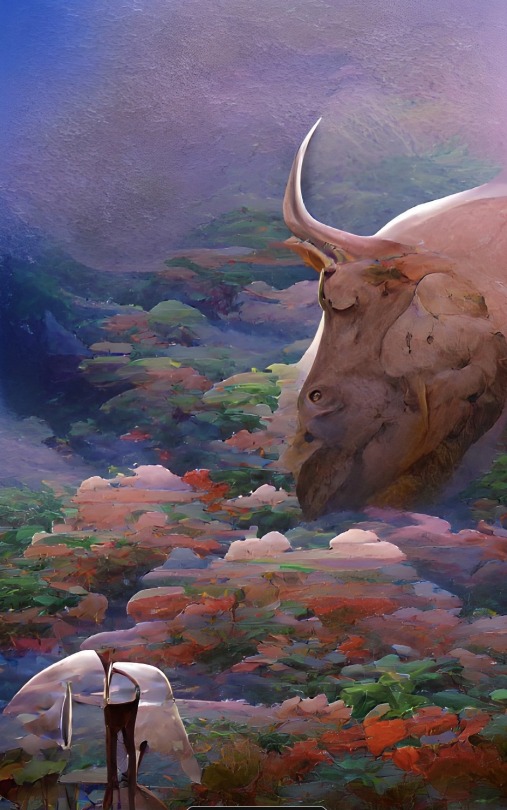
-Realistic goals and expectations
-Prefers routine
-Careful and usually slow with decision making
-Many can have a “believe it when I see it” attitude
-Stubborn and rooted to what they know
-Focused on security and stability
-Associated with money and possessions
-Hard working







